What can be done? - Praktiken der Solidarität
Participating artists: Anatoly Belov (Ukraine), Aldo Giannotti (Italy, Austria), Anna Jermolaewa (Russia, Austria), William Kentridge (South Africa), Dariia Kuzmych (Ukraine, Germany), Alicja Rogalska (Poland, UK), Kamen Stoyanov (Bulgaria, Austria), Rayyane Tabet (Lebanon, USA), and Anna Witt (Germany, Austria)
Curated by Michaela Geboltsberger
Folder (German)
Opening photos
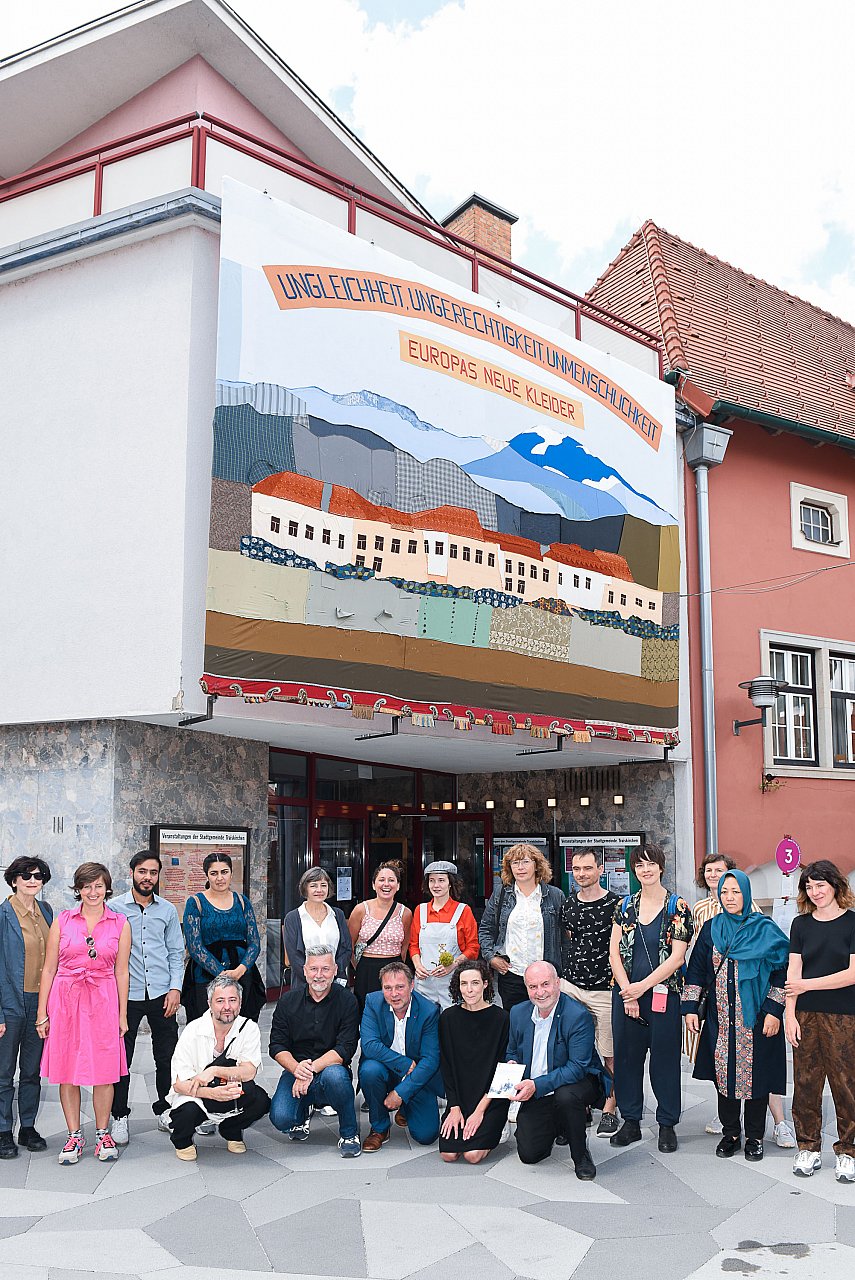
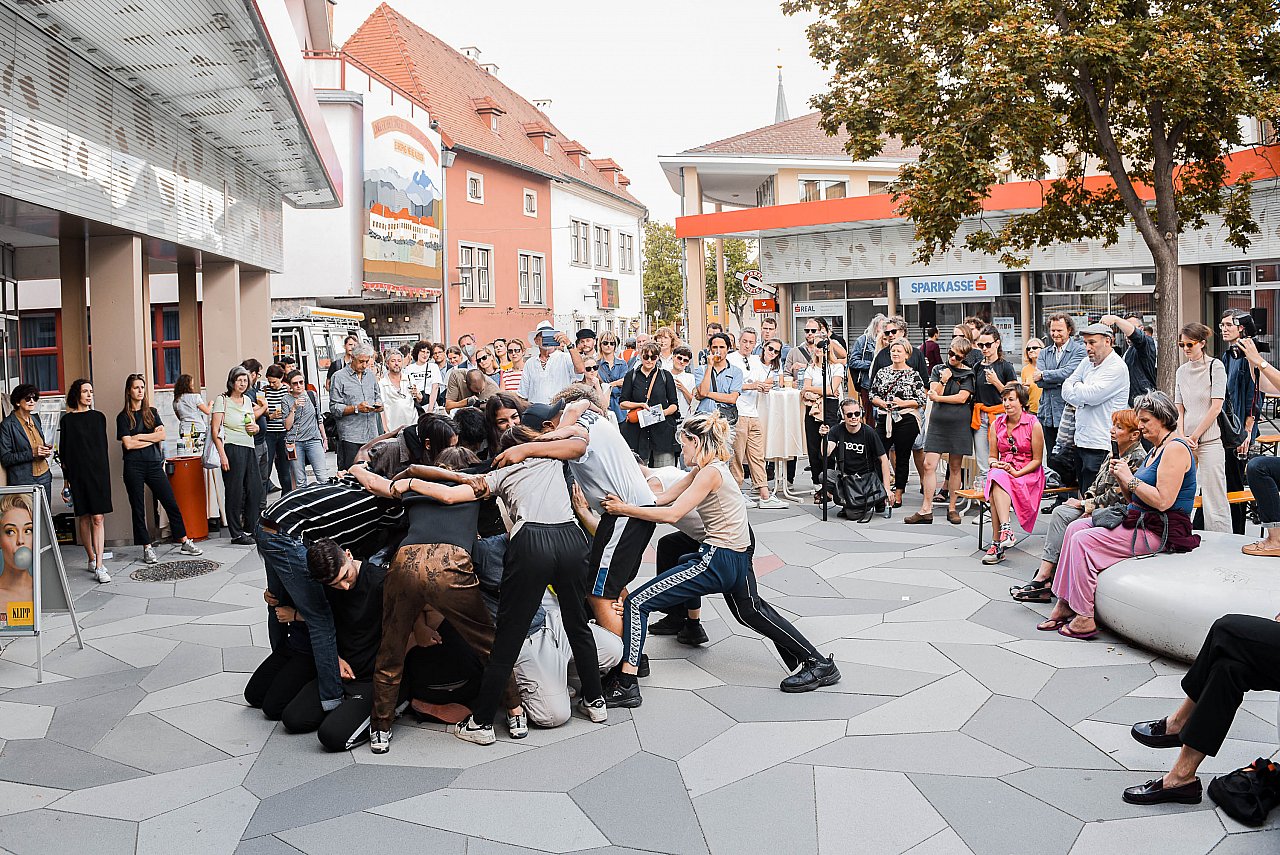
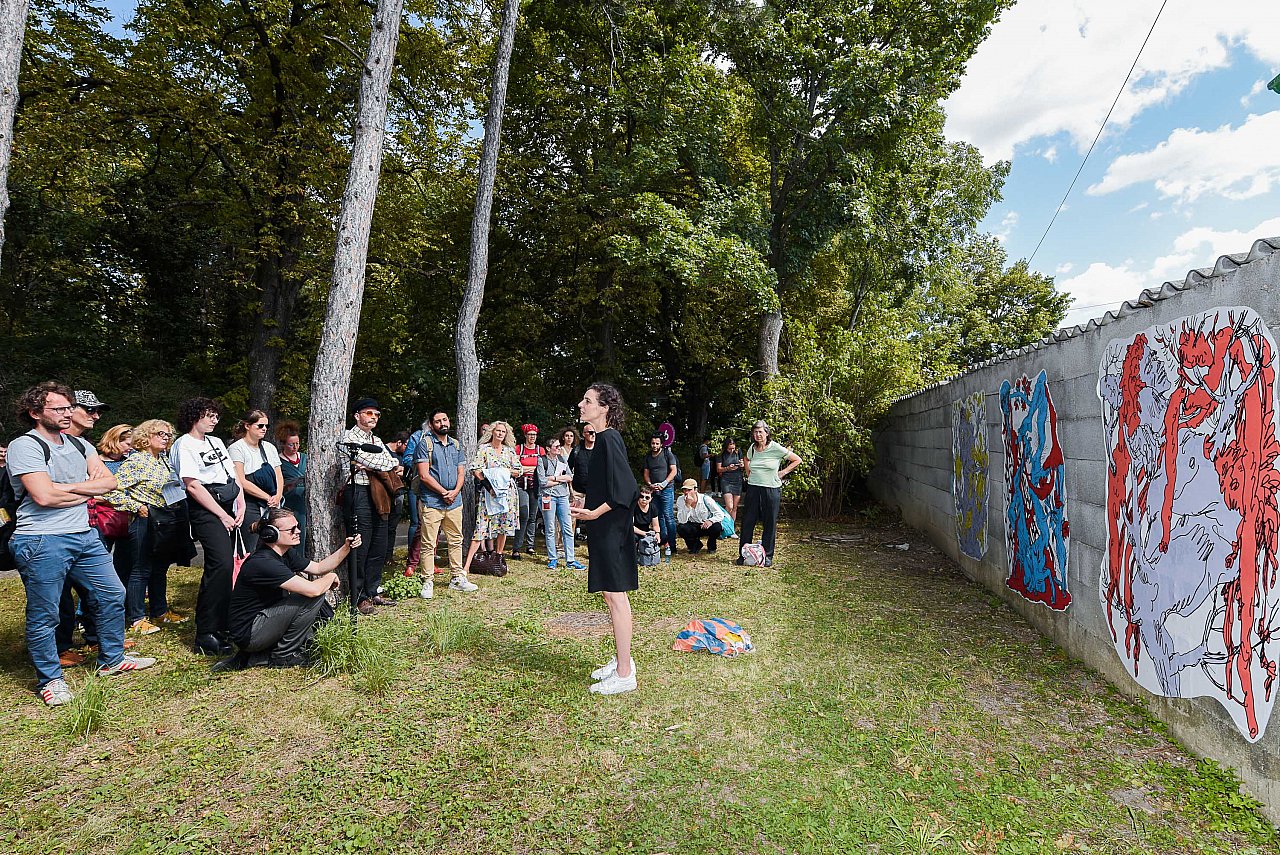
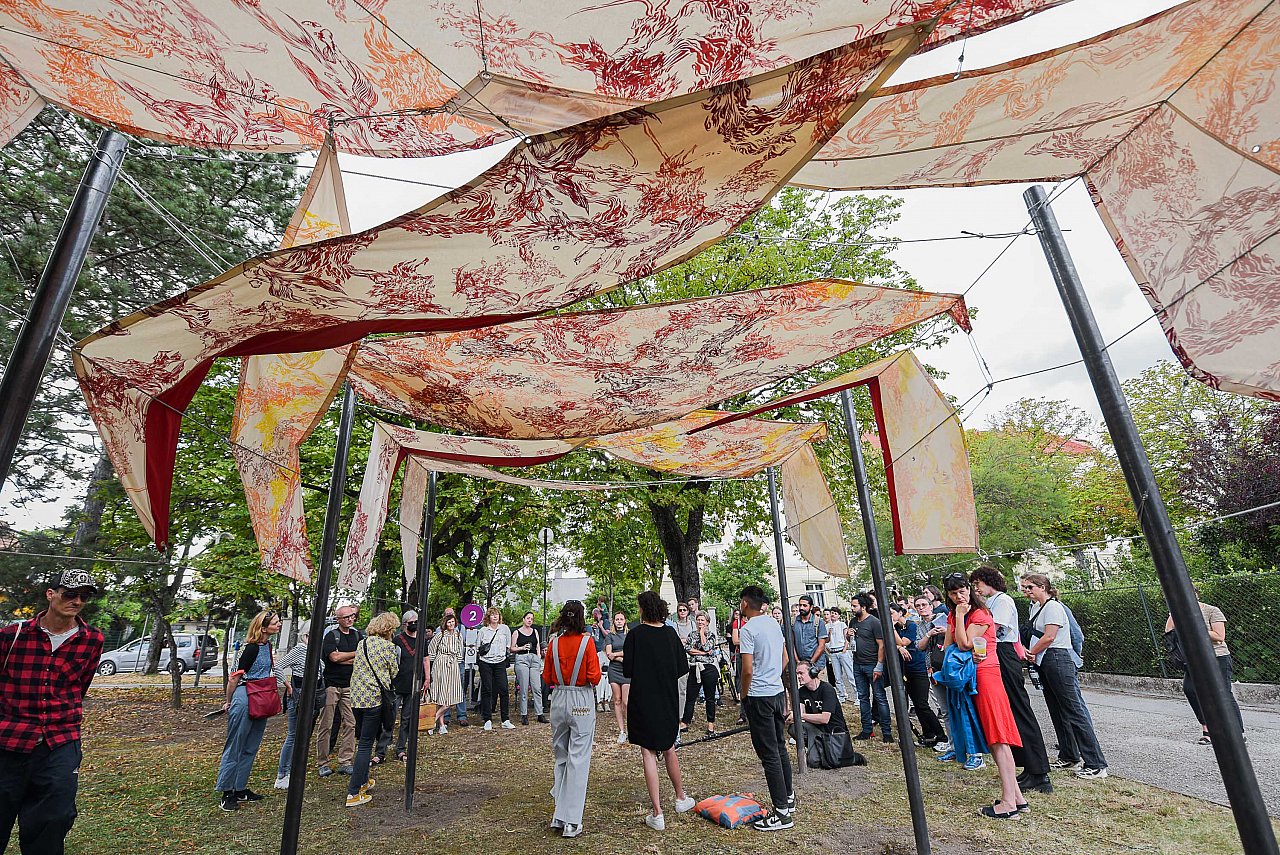
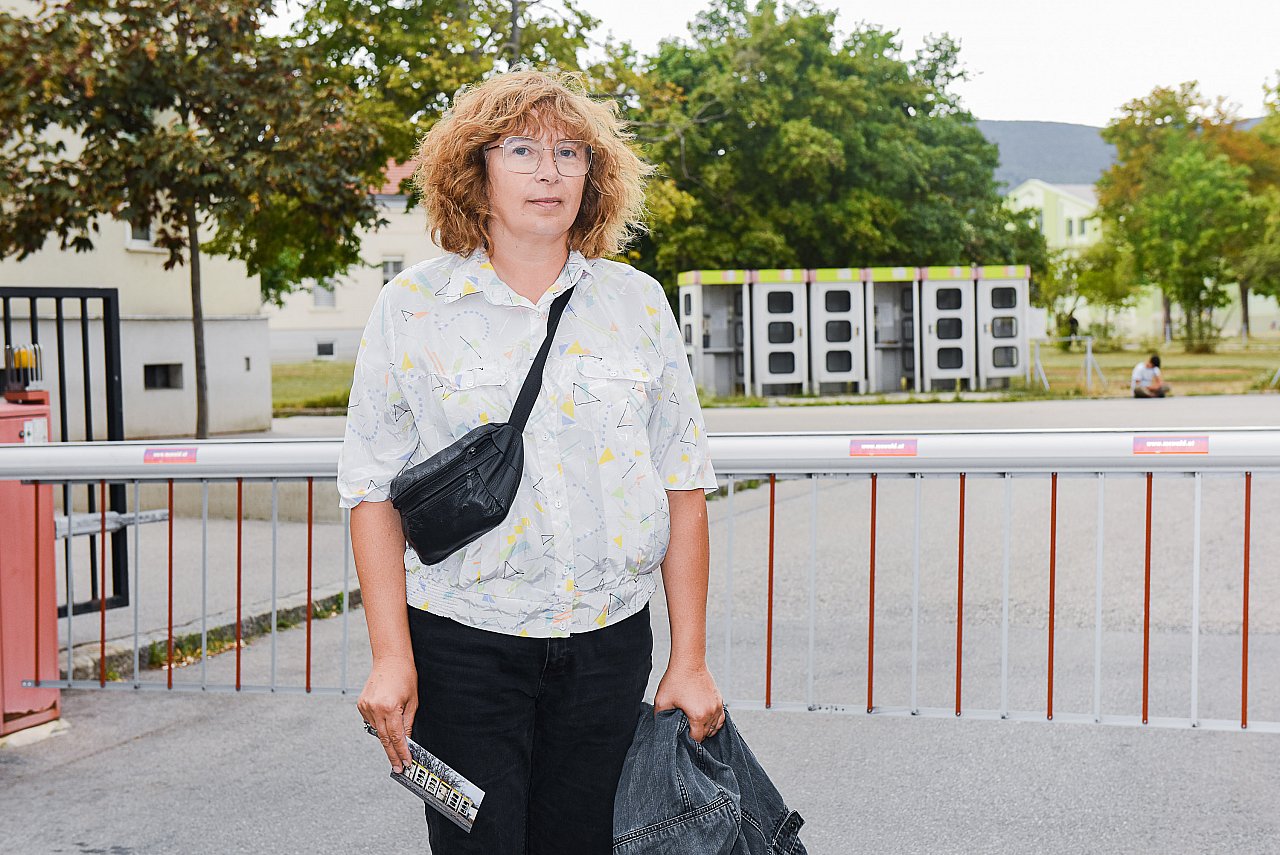
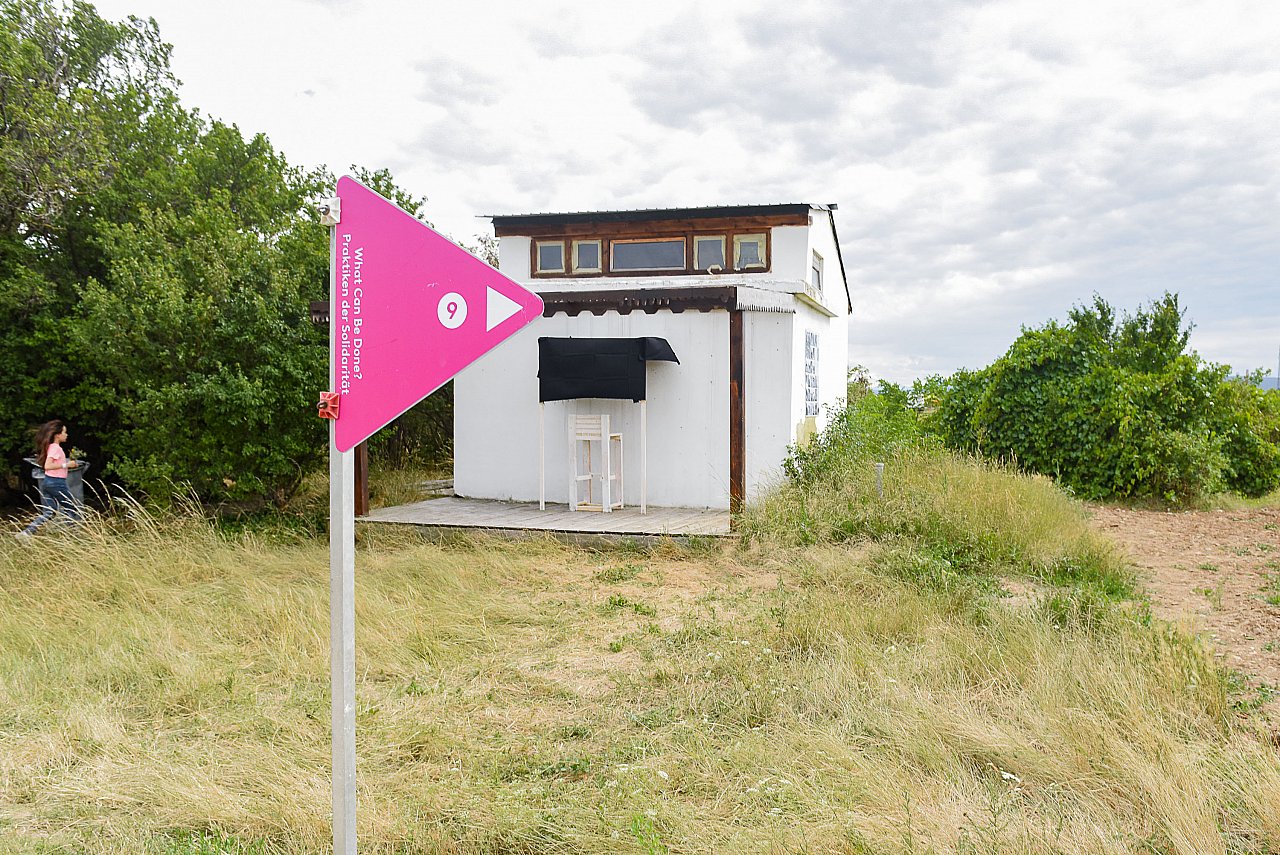
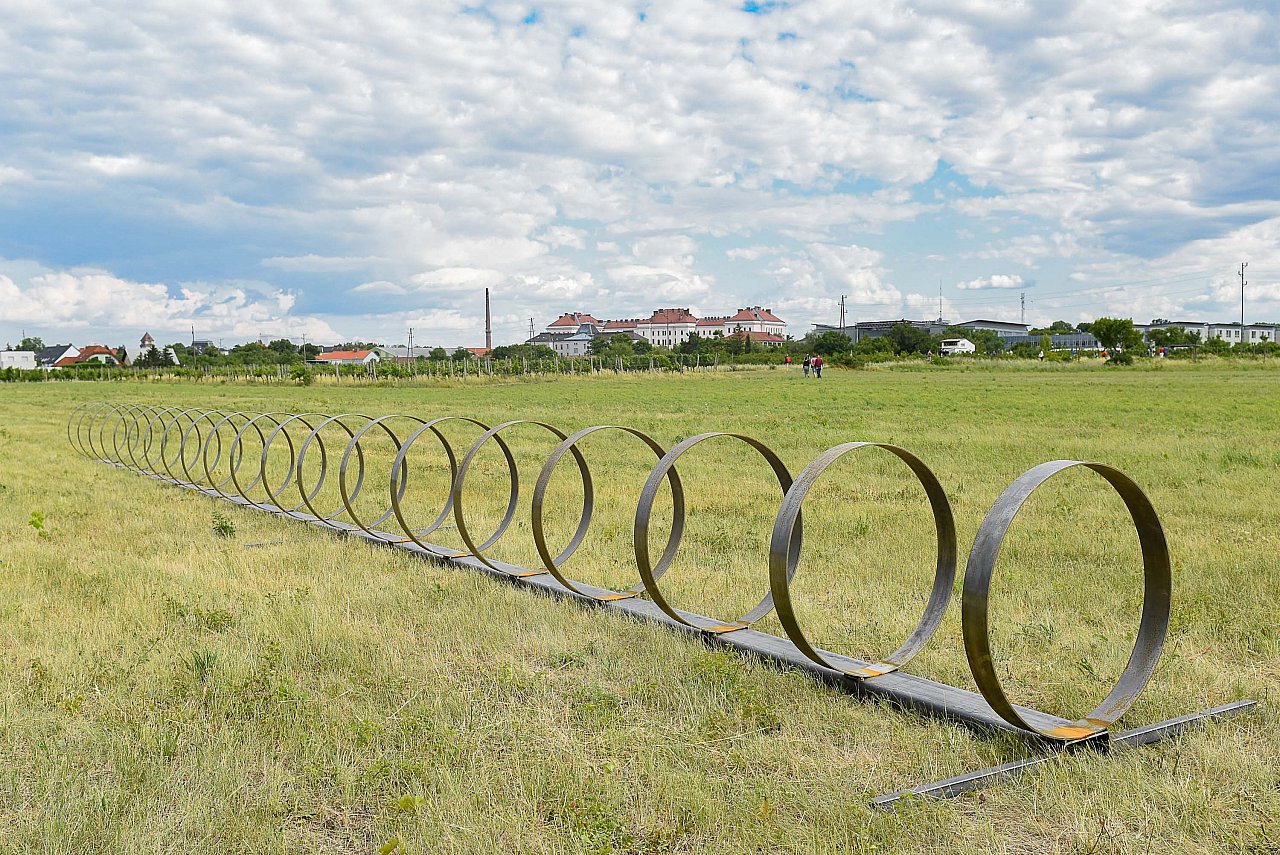
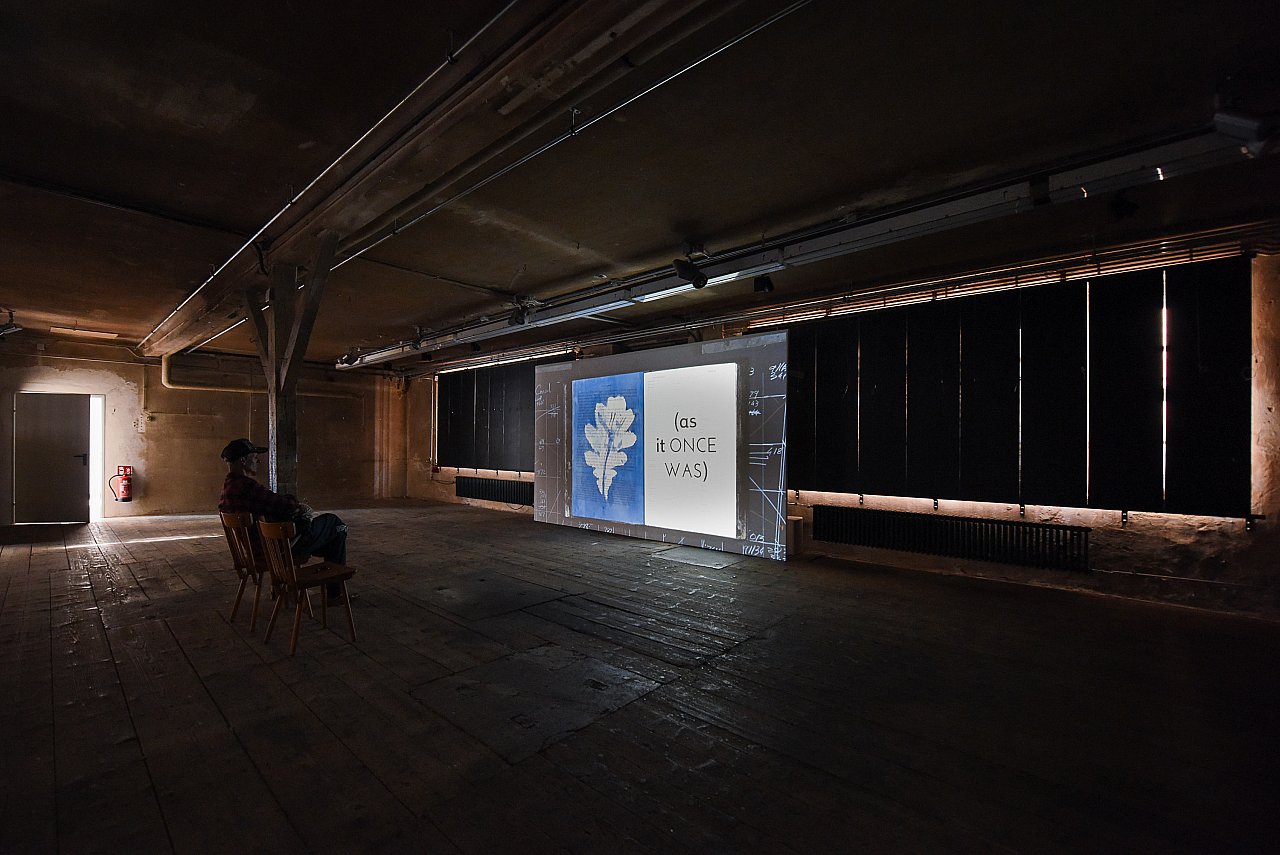
© Eröffnung Traiskirchen, (c) Joanna Pianka
Curated by Michaela Geboltsberger
Folder (German)
Opening photos








© Eröffnung Traiskirchen, (c) Joanna Pianka
What can be done? is an outdoor exhibition of contemporary art spread throughout the town of Traiskirchen that addresses issues of social participation and solidarity with a focus on current and historical contexts.
Traiskirchen has many facets. It also has a rich history as an important industrial center from the 18th century on and managed to reinvent itself after the end of the industrial boom. The former factory halls, where goods for the entire world were manufactured for many years, have housed new trades and service providers for a while now. The Wiener Neustadt Canal, which was once an important route for transporting goods, is now a recreational area, and winegrowing is still an important part of the cultural heritage of the city and the entire region. The spirit of the former working-class town is still omnipresent with regard to politics as well.
However, Traiskirchen is also a town that left its mark on the collective memory of Austrians in 2015, if not before. The reception center for refugees (German: Erstaufnahmestelle Ost) has reflected the geopolitical conflicts within and beyond Europe since the 1950s. In 1956, refugees primarily from Hungary arrived at the reception center in Traiskirchen, which was initially established as a temporary solution. Later, people from Czechoslovakia, Chile, Poland, and Romania came; then in the 1990s, people fled the Balkan Wars, and from the end of the 1990s on, refugees came from Afghanistan, Iraq, and Syria. In 2015, 4,500 people were living in the reception center, setting a new record.
At the same time, Traiskirchen has also become a symbol of acts of solidarity, thanks to its strong civil society. It is a very ambivalent place.
In light of the current war in Europe, people express their solidarity and call for a united Europe, one that stands together. Although the word “solidarity” is used almost excessively, it does not seem to apply to everyone.
What does solidarity mean within and beyond Europe today? Old conflicts apparently continue to persist, and new crisis areas are constantly emerging. Instead of true cooperation, national isolationist tendencies are creating rifts in the European Union, trying its resilience. The COVID-19 pandemic has impressively shown how people in society as a whole first closed ranks and then began to increasingly follow their individual interests.
While the current war continues to leave many people shocked, and immigration policy makers struggle to find the right solutions, civil society is increasingly providing urgently needed help. Many people ask themselves, “What can we do?”
Do European policies have the potential to create a society based on solidarity that is ready for the future? Negotiating ideas about how people can live together is done not only on the level of politics, but also in classrooms, at universities, on the streets, and most importantly in people’s private lives. This conversation can be felt clearly in Traiskirchen.
What can contemporary art achieve in this tension-riddled context? At a time when we are facing great challenges, art is capable of working through things, visualizing ideas, keeping discourses open, and perhaps contributing to making alternative social approaches palpable and hence imaginable through action and initiatives based on solidarity and communal dynamics.
The site-specific works in this exhibition explore issues like migration, personal freedom, acts of solidarity and moral courage, current societal challenges, as well as personal dreams and wishes.
Traiskirchen has many facets. It also has a rich history as an important industrial center from the 18th century on and managed to reinvent itself after the end of the industrial boom. The former factory halls, where goods for the entire world were manufactured for many years, have housed new trades and service providers for a while now. The Wiener Neustadt Canal, which was once an important route for transporting goods, is now a recreational area, and winegrowing is still an important part of the cultural heritage of the city and the entire region. The spirit of the former working-class town is still omnipresent with regard to politics as well.
However, Traiskirchen is also a town that left its mark on the collective memory of Austrians in 2015, if not before. The reception center for refugees (German: Erstaufnahmestelle Ost) has reflected the geopolitical conflicts within and beyond Europe since the 1950s. In 1956, refugees primarily from Hungary arrived at the reception center in Traiskirchen, which was initially established as a temporary solution. Later, people from Czechoslovakia, Chile, Poland, and Romania came; then in the 1990s, people fled the Balkan Wars, and from the end of the 1990s on, refugees came from Afghanistan, Iraq, and Syria. In 2015, 4,500 people were living in the reception center, setting a new record.
At the same time, Traiskirchen has also become a symbol of acts of solidarity, thanks to its strong civil society. It is a very ambivalent place.
In light of the current war in Europe, people express their solidarity and call for a united Europe, one that stands together. Although the word “solidarity” is used almost excessively, it does not seem to apply to everyone.
What does solidarity mean within and beyond Europe today? Old conflicts apparently continue to persist, and new crisis areas are constantly emerging. Instead of true cooperation, national isolationist tendencies are creating rifts in the European Union, trying its resilience. The COVID-19 pandemic has impressively shown how people in society as a whole first closed ranks and then began to increasingly follow their individual interests.
While the current war continues to leave many people shocked, and immigration policy makers struggle to find the right solutions, civil society is increasingly providing urgently needed help. Many people ask themselves, “What can we do?”
Do European policies have the potential to create a society based on solidarity that is ready for the future? Negotiating ideas about how people can live together is done not only on the level of politics, but also in classrooms, at universities, on the streets, and most importantly in people’s private lives. This conversation can be felt clearly in Traiskirchen.
What can contemporary art achieve in this tension-riddled context? At a time when we are facing great challenges, art is capable of working through things, visualizing ideas, keeping discourses open, and perhaps contributing to making alternative social approaches palpable and hence imaginable through action and initiatives based on solidarity and communal dynamics.
The site-specific works in this exhibition explore issues like migration, personal freedom, acts of solidarity and moral courage, current societal challenges, as well as personal dreams and wishes.

